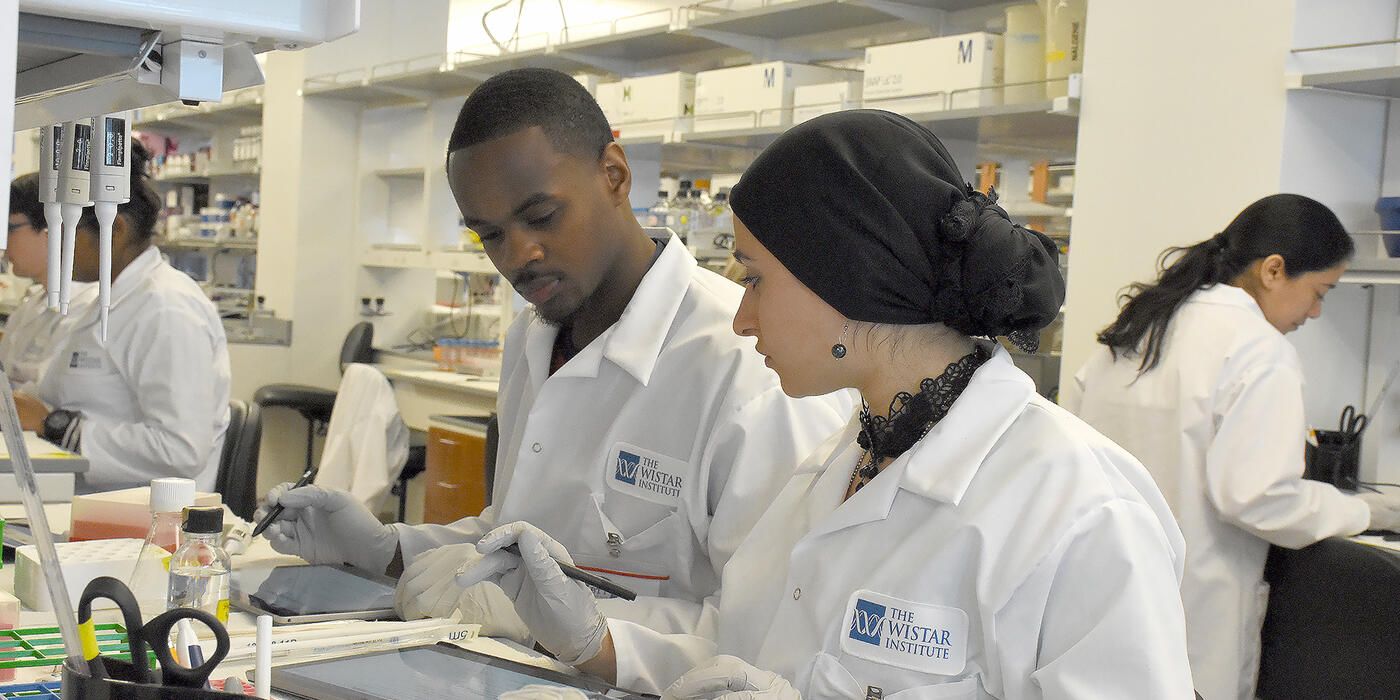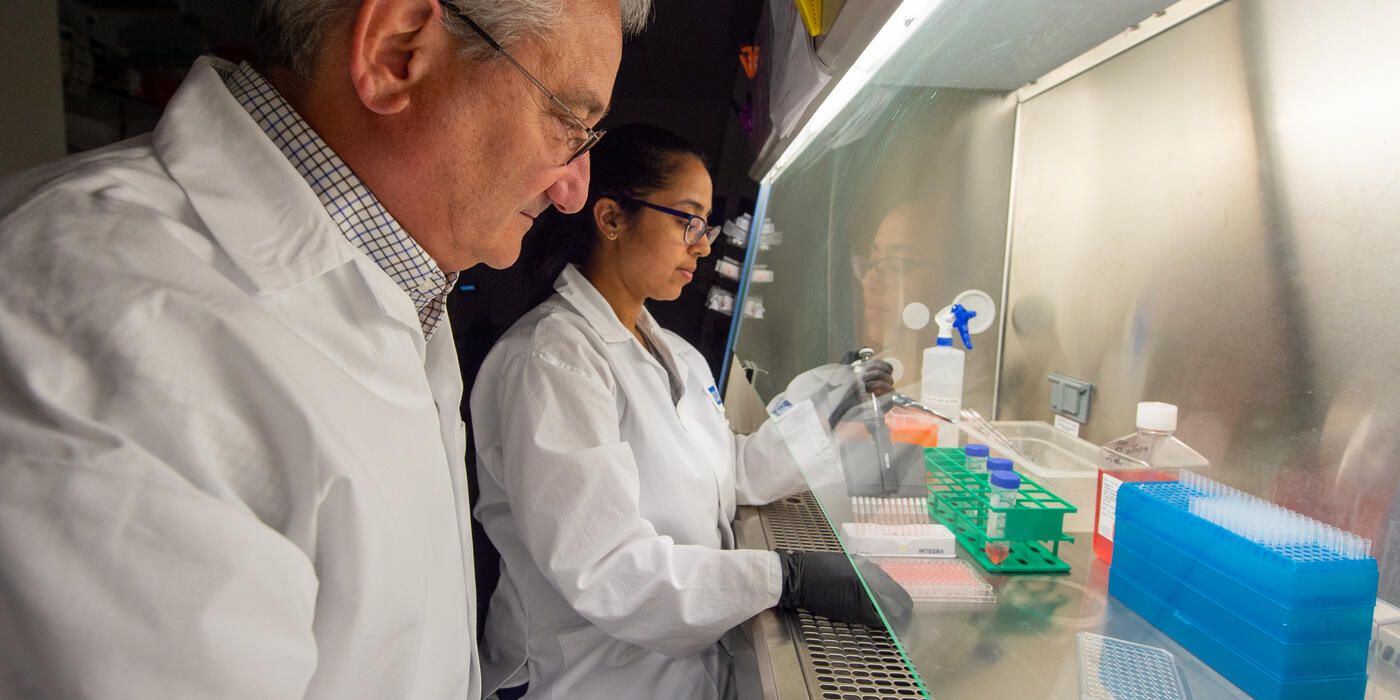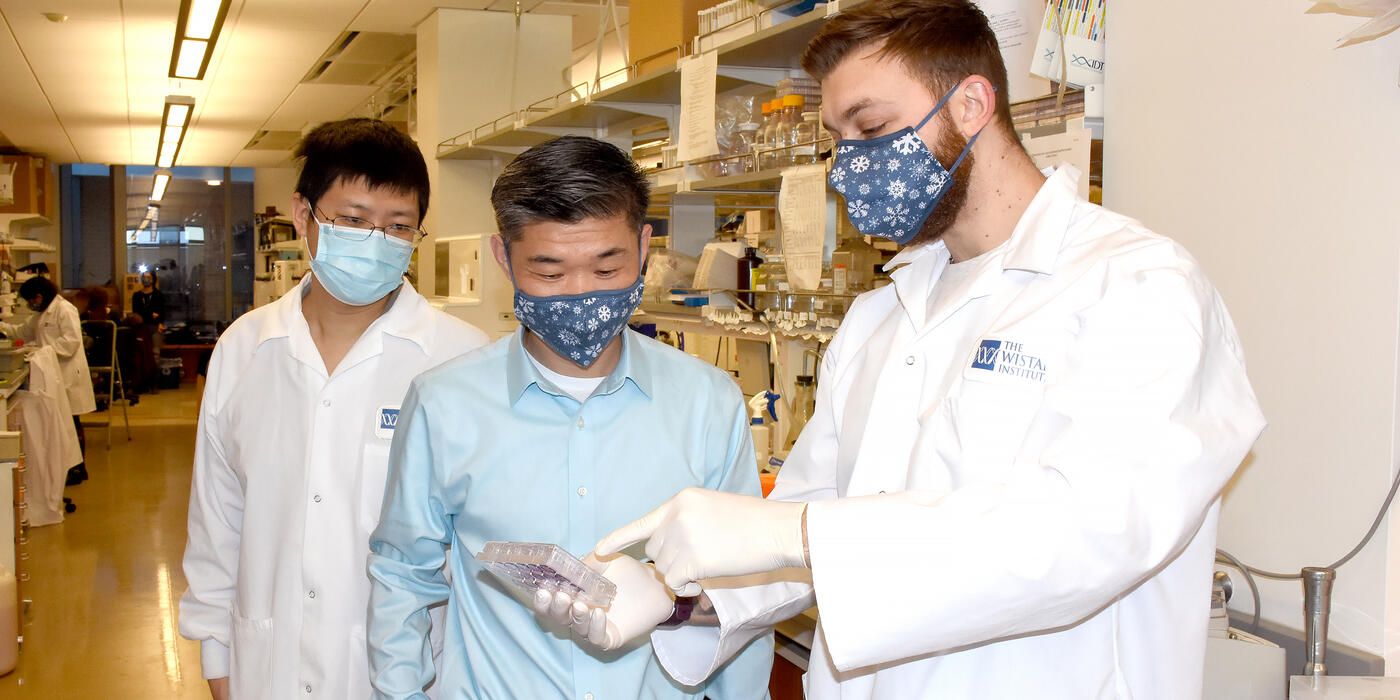The Wistar Institute Receives Transformative National Science Foundation Grant to Expand and Accelerate STEM Training Program
PHILADELPHIA — (May 11, 2021) — The Wistar Institute received a $599,969 grant from the National Science Foundation (NSF) to scale up its Biomedical Technician Training (BTT) Program to train more students in a condensed timeline with a direct path to employment.
“If there is one thing that we learned from the tragedy of the COVID-19 pandemic, it is that we need more science, more scientists and more innovators in STEM careers and the life sciences. Like we always say at Wistar, science is the answer, and we are absolutely delighted that the NSF has recognized our decades-long impact and track record of excellence in these areas,” said Dario Altieri, M.D., president and CEO, director of the Cancer Center, and the Robert and Penny Fox Distinguished Professor of The Wistar Institute. “The new NSF award will be truly transformative for supporting innovation in education and training, fulfilling our goal of creating a unique framework that merges teaching and job creation in the life sciences in a single, seamless continuum in our region and beyond.”
Since 2000 The Wistar Institute’s BTT Program, a two-summer, hands-on, mentored technician training program, has prepared Community College of Philadelphia (CCP) students for positions in academic and biotechnology laboratories. This NSF grant will support a substantial expansion of this program with innovative curricula and the inclusion of additional community colleges.
During the new NSF-supported program, named Expansion, Curriculum Evolution, and Enhancement during BioTechnician Training (ExCEEd BTT), students will follow an accelerated, one-summer pre-apprenticeship training including a hands-on orientation at Wistar and two full-time, mentored laboratory experiences in academia and industry. Program graduates will be prepared for immediate employment as laboratory technicians and may also continue training through Wistar’s registered Biomedical Research Technician (BRT) Apprenticeship.
The BTT and BRT Programs will continue to provide training and research experiences not typically available to associate degree students, a segment of the workforce that is indispensable to support the success of an ever-expanding biotechnology sector. ExCEEd BTT will allow Wistar to continue to train a diverse and underrepresented student population not generally included in life sciences research.
“The most effective way to increase diversity in research is to provide training opportunities for everyone and to support students from underrepresented groups to meet their full potential and access career paths in the life sciences,” said Kristy Shuda McGuire, Ph.D., Wistar associate dean of biomedical studies and principal investigator on the grant. “For 20 years, our educational programs have moved in that direction, and we are thrilled to be able to enhance our training thanks to NSF support. We hope this program will also serve as a model for other community colleges and scientific research partners.”
ExCEEd BTT has three primary goals: expand the program to recruit more students from additional community college partners, while developing collaborations that make ExCEEd BTT credit-bearing; develop a project-based curriculum specifically tailored to teach biotechnology research skills and engage students from underrepresented groups; and enhance the existing two-summer program as a one-summer pre-apprenticeship training experience with full-time internships in both academic and industry labs.
###
The Wistar Institute is an international leader in biomedical research with special expertise in cancer, immunology, infectious disease research, and vaccine development. Founded in 1892 as the first independent nonprofit biomedical research institute in the United States, Wistar has held the prestigious Cancer Center designation from the National Cancer Institute since 1972. The Institute works actively to ensure that research advances move from the laboratory to the clinic as quickly as possible. wistar.org.









